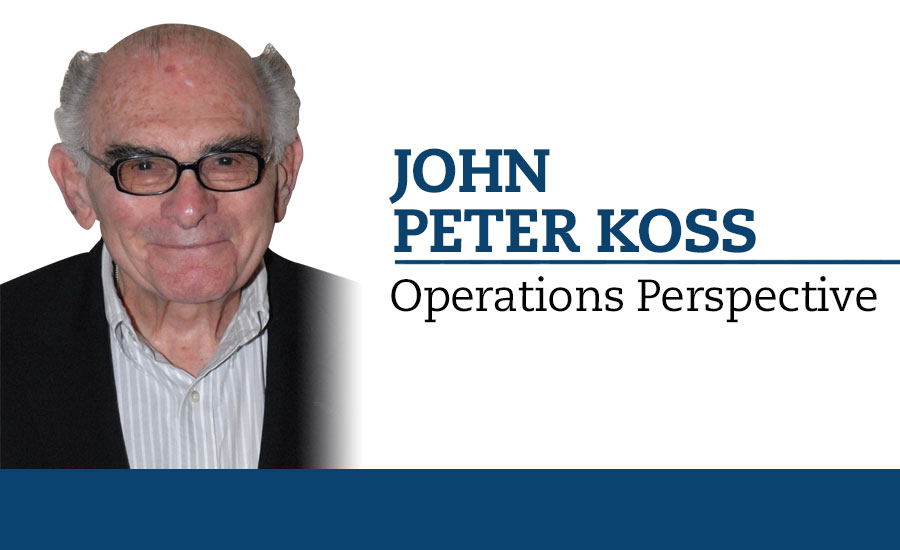Time is taken for granted in most industries. However, recognition must be given to the age-old cliché that time is money, and money can hardly be taken for granted, especially in beverage operations. From an operations viewpoint, time is inescapable and plays a prominent role in the beverage industry.
The initial obvious question is, why is time so important and, in many cases, critical? References to operations activities inside and outside of a plant, in addition to providing defined problem areas, can bring an enlightened answer to this important question.
Processing products and/or formulations in alcohol and non-alcohol beverages is predicated on time or aging cycles to ensure required product quality characteristics. When such time specifications are not adhered to, unfavorable products and unnecessary costs can be incurred. The problem of processing time has been addressed by manufacturers and producers with digital, electronic and computerized programs designed to control the required timing.
However, many devices and related software have not been perfected to the point where they are fail-proof. Even under the best of conditions with automated complex applications, adhering to time specifications still presents unexpected problems. Time in processing beverages is important.
Beverage production or packaging lines probably are the most critical in terms of time importance and orientation. Almost everything is focused on time. The following are some reference points:
- entire input/output cycles are designed to provide (x) number of cases an hour, day, month or year;
- each line operating station must provide (y) number of units a minute or hour to the succeeding station to keep the flow moving;
- beverage fillers usually are designed to produce (z) number of containers a minute or hour and become the controlling machine; and
- all equipment must provide sufficient input to keep the filler running and have output capability to ensure the filler does not stop.
Such constantly changing conditions and the impact of time have resulted in the demand for bigger and faster fillers to get more output for each unit of time.
The same rationale is applicable to other operating stations, such as washing, rinsing, labeling, coding, packing and palletizing, in any beverage production facility. Within this usual configuration, besides the expected individual machine capability, manufacturers are confronted with maintaining specified line speeds, maximizing uptime, reducing or eliminating downtime (and causes), and overall utilization of available (or scheduled) time.
Even though varying degrees of automation have occurred, time can be lost due to common causes like delayed startups, faulty maintenance or lack of supplies — items controlled by line technicians who must be time-oriented. For this reason, time spent producing salable product to generate revenue truly is productive time; the point at which time definitely is money. Every production minute lost can never be recaptured. That holds true and verifies the legitimate concern about time.
Although not as time critical as production/packaging, pre-distribution and warehousing operations can still cause costly delays in picking and staging orders (manual or automated), loading and unloading route vehicles, and dispatching vehicles for distribution (customer service). Although automated sorting and picking systems are installed in some beverage operations, time continues to be a primary issue because actual output has not reached the designed output.
The warehousing portion of the warehouse is impacted by time only as it pertains to how much and how long inventories are carried and how much space is consumed over that period of time. The succeeding operation is pre-distribution.
Once orders activate case removal from inventory, the pre-distribution operation — including sorting, picking and/or staging partial or full pallets of product — goes into effect. Time is a factor in pre-distribution for several reasons: space in staging areas usually is limited and orders must be loaded in a timely manner to make room for continual staging, completed orders must be promptly loaded to affect the load line flow, and the variability of the loads in each vehicle might require different methods of handling. Time use in pre-distribution is subtle but can be a hidden cost in operations.
Finally, distribution definitely is time oriented, variable and can be costly. Route structures, size, type and schedules are factors that impact distribution time and customer service. Numerous programs exist for route layout, schedules and accounting. However, the profitability relies on case volume delivered for each route day.
The length of a route day (8, 10 or more hours) can determine volume delivered. Nevertheless, the number of stops and cases for each stop within the route hours requires effort and time. This can be particularly critical when no stock is available.


